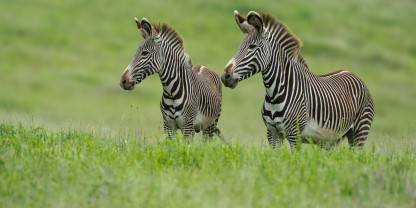The Laikipia Plateau offers something a little different to other Kenyan safari experiences. Instead of national parks, Laikipia is sprinkled with community-run conservancies, most of which offer incredible wildlife viewing, great scenery, and luxury tented camps and lodges, all combined with commercial cattle ranching. This is prime Big Five territory, with the conservancies among the best places in Kenya to see rhino. Laikipia is also home to many indigenous communities, including the Laikipia Maasai and Samburu.

-
Best Time To Go
- July to September (Little rain)
-
High Season
- June to October and December to March
-
Size
- 9,723km² / 3,754mi²
-
Altitude
-
1,222-2,845m /4,009-9,334ft
 View Photos
View Photos
 View Photos
+24
Photos
View Photos
+24
Photos
 Open Map
Open Map
Pros & Cons
- Excellent wildlife viewing with all of the Big Five easy to spot
- Wildlife densities are similar to the Masai Mara National Reserve
- Many different experiences and accommodation styles available
- Night drives, horseback riding and walking safaris available
- Stunning views of Mt Kenya from some conservancies
- The presence of cattle can reduce the wilderness appeal
- Most conservancies are only accessible to high-end safaris
Wildlife
The Laikipia Plateau offers excellent wildlife viewing. All of the Big Five are easy to find, and the sightings of both black and white rhino are unsurpassed. All big cats are used to vehicles, and the area is home to the only viable (but hard to see) wild dog population in the northern hemisphere. Night drives come with an excellent chance of seeing nocturnal creatures such as genet, bush baby and aardvark.
More about Laikipia's wildlifeScenery
Laikipia is one of the most beautiful regions in Kenya. Basalt outcrops and lush, forested slopes dot the semi-arid plains, usually against the backdrop of the mighty snowcapped peak of Mt Kenya, which often appears magically when the clouds part and you least expect it. And in places, the scenic Ewaso Nyiro and Ewaso Narok Rivers cut through the plateau via spectacular rocky gorges.
Activities
Guided , including night drives, are the main activity in the Laikipia Plateau conservancies. All guided drives are allowed off-road, which can make for some really up-close encounters. Self-guided drives are allowed only in Ol Pejeta Conservancy. Other terrific activities include horseback riding and walking safaris (the latter led by an armed guide).
Weather & Climate
As Laikipia is close to the equator, its temperatures are fairly consistent from month to month. Any variation is due to the two seasons that govern the plateau’s climate: the Dry season (June to September) and Wet season (October to May). The drier months see plenty of sunshine, though there’s always the chance of rain. The Wet season progresses in three distinct stages: from some rain to less rain to lots of rain.
More about the weather and climateBest Time To Visit
You can go on safari in Laikipia year-round. But for wildlife viewing, the dry months from July to September, and to a lesser extent January to March, are best. This is when there is little water in the bush and animals come to reliable water sources to drink. After heavy rain, usually in April, May and November, roads can be very bad and many lodges close. December to March is best for birding.
More about the best time to visit



